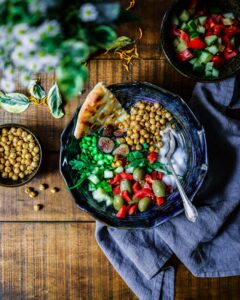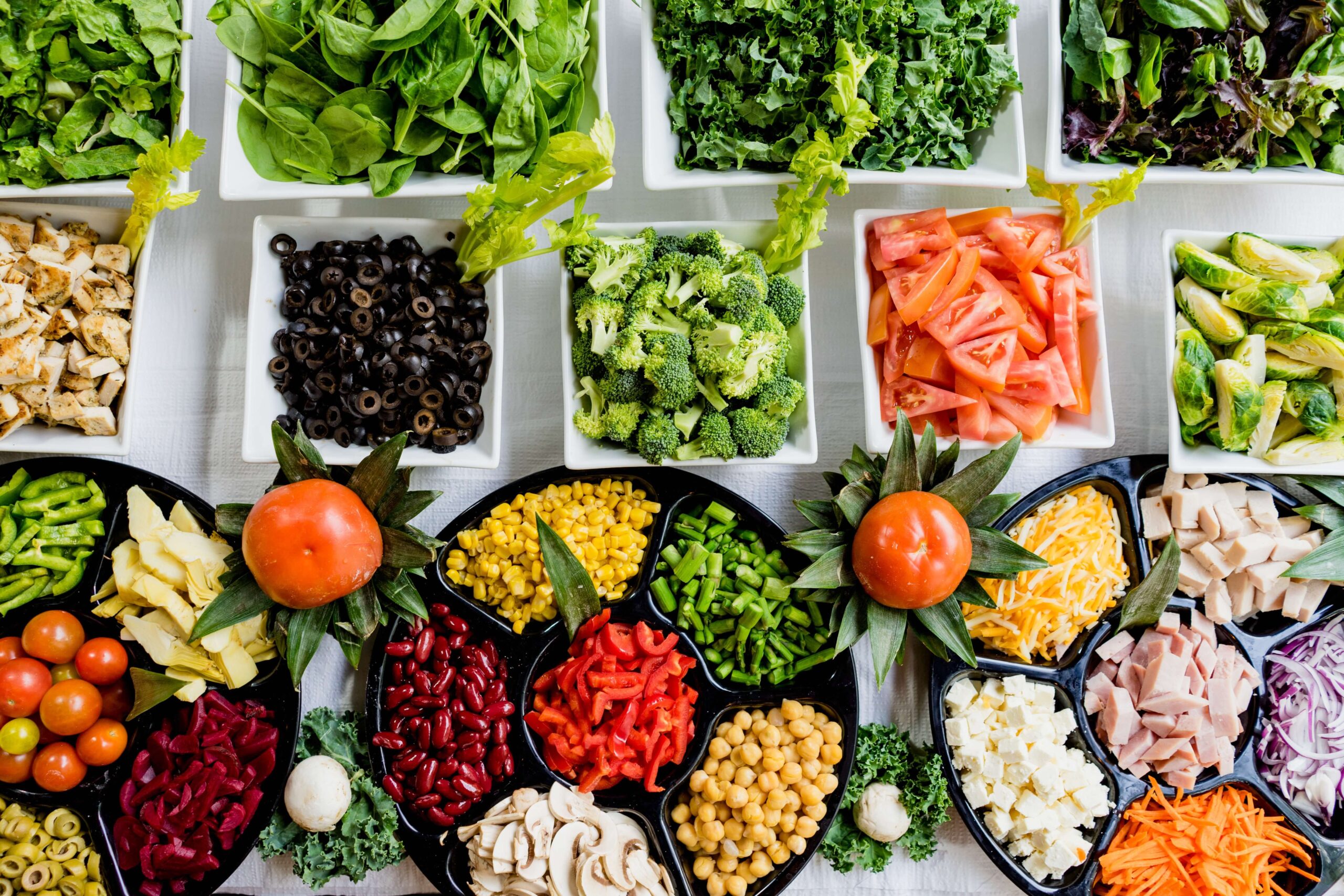In India, we do not give importance to a high fiber rich foods, most likely because of its name. Fiber from plants whether it is in seeds, vegetables, or whole meal bread, it protects us from different kinds of diseases, but very few people are aware of them. Dietary fiber from a high fiber rich foods is also known as a better digester.
For our overall well-being, it is essential to maintain a healthy diet, and consuming a sufficient amount of high fiber rich foods is one important component of a balanced diet. Fiber is essential for maintaining a healthy digestive tract and preventing a number of diseases. There are many high fiber rich foods in India, a nation with a wide variety of culinary traditions, that are simple to include in your daily meals. (1)
Before we explore the best high fiber rich foods in India, let’s understand what is dietary fiber and its types. Dietary Fiber, commonly referred to as roughage or bulk, is a form of carbohydrate found in plant-based foods that cannot be completely digested by the human body.
Fibers are of two types, predominantly soluble and insoluble.
- Soluble Fiber dissolves in water and creates a gel-like material in the digestive tract. It lowers cholesterol and controls blood sugar levels. Oats, legumes, fruits, and vegetables are among the foods high in soluble fiber.
- Insoluble Fiber does not dissolve in water and provides bulk to the stool, avoiding constipation and facilitating regular bowel movements. Insoluble Fiber is found in whole grains, nuts, seeds, and bran.
High Fiber Rich Foods in India: A Nutritional Powerhouse
1. Legumes and Lentils: Fiber Powerhouses
In Indian cooking, lentils and other legumes are staples and a great source of fiber, protein, and other nutrients. They come in a variety of types, and each one has a special flavour and texture.
- Chickpeas: A versatile Source of Fiber
Chickpeas, also known as garbanzo beans, are a multipurpose legume that is frequently used in Ind
ian cuisine. They are an excellent source of both soluble and insoluble fiber and have plenty of health advantages. This fiber-rich dish can enhance your daily fiber intake whether you’re preparing a tasty chana masala or a hearty chickpea salad.
- Red Lentils: Rich in Protein and Fiber
Red lentils, a staple in dals and soups, are an excellent source of protein as well as nutritional fiber. Red lentils are a great option for those trying to increase their intake of fiber and protein because of their earthy flavour and rapid cooking time.
- Black Beans: A Nutritious Addition to Your Diet
Black Beans or Rajma, are an essential ingredient in Indian cuisine, particularly in North India. These legumes are a good source of protein, fiber, and important minerals. Black beans can raise the fiber content of your meals, whether you prepare a soothing rajma curry or including them in salads.
2. Whole Grains: Fiber-Boosting
A diet high in fiber must include whole grains. They provide a complete package of fiber, vitamins, and minerals since they contain the bran, germ, and endosperm of the grain. Including these grains into your diet will help you maintain a healthy gut, blood sugar control, and lose weight. Let’s look at some common whole grains that you can include in your meals.
- Brown Rice: High in Fiber and Nutritious
A great source of dietary fiber is Brown rice, a healthier option to white rice. Brown rice’s chewy texture and nutty flavour make it a versatile ingredient for pilafs, stir-fries, and also as a side dish for curries.
- Whole Wheat: A Reliable Source of Fiber
In India, whole wheat is a staple grain used for making chapatis, rotis, and a variety of breads and baked products. Whole wheat is a better option for anyone looking to boost their intake of fiber because it retains its fiber content, unlike refined flour.
- Oats: A Healthy Breakfast Option
Oats are a well-liked breakfast food that are rich in nutrients and soluble fiber. Oats offer a filling and fiber-rich start to your day, whether they are consumed as oatmeal, muesli or granola.
3. Fruits and Vegetables: Plenty of Fiber
Fruits and vegetables not only contain an abundance of vitamins and minerals, but they also contribute considerably to your daily fiber consumption. Let’s look at some fiber-rich choices that can simply be added into your meals and snacks.
- Avocado: Creamy and High in Fiber
Although it is a fruit, avocado is frequently used as a vegetable in savoury meals and salads. This creamy fruit is a great source of nutritional fiber, good fats, and vitamins and minerals.
- Apples: A Fiber-Rich Crunchy Delight
When it comes to fiber consumption, the proverb “an apple a day keeps the doctor away” holds true. Apples are not only tasty and crunchy, but they also contain a lot of nutritional fiber, especially when eaten with the peel.
- Broccoli: Fiber-Rich Green Power
Broccoli, a cruciferous vegetable, is high in fiber and low in calories. Broccoli can significantly raise the amount of fiber in your diet whether it is steamed, stir-fried, or added to soups and salads.
4. Nuts and Seeds: Small Powerhouses of Fiber
Nuts and seeds are not only handy snacks, but they are also high in fiber. Let’s look at some fiber-rich nuts and seeds that you can add in your diet.
- Almonds: Crunchy and Fiber-Rich
Almonds are one of the best sources of dietary fiber in addition to being a good source of protein and healthy fats. Almonds make a delicious fiber boost when eaten as a snack or added to salads and smoothies.
- Flaxseeds: Fiber-Rich Superfood
Flaxseeds or Alsi, , are tiny seeds high in omega-3 fatty acids, fiber, and antioxidants. Ground flaxseeds can be added to smoothies, yoghurt, or used as an egg substitute in baking dishes, providing a nutritious and fiber-rich supplement to your diet.
- Chia Seeds: Little Fiber Boosters with Big Power
Chia seeds are high-fiber superfood that is simple to include in your meals and snacks. They are rich in antioxidants, soluble fiber, and omega-3 fatty acids. Chia seeds can be used to overnight oats, puddings, or smoothies to provide a fiber boost.
5. Root vegetables: Fiber-rich and Earthy-flavored
Root vegetables such as Sweet potatoes, Beets, and Turnips are high in fiber and have distinct earthy flavours. To add a healthy dose of fiber and other necessary elements to stews, these adaptable vegetables can be roasted, mashed, or added to them.
6. Coconut: An Important Source of Fiber
Coconut, a flexible ingredient used in many Indian cuisines, is not only tasty but also high in fiber. You can add grated or fresh coconut to curries, chutneys, and desserts to increase the fiber content of your food.
7. Quinoa: A Full Source of Fibre
Quinoa, though not native to India, has grown in favour as a healthy grain substitute. Quinoa has all nine of the essential amino acid groups, making it a complete protein in addition to being high in fiber. Use quinoa as a salad or stir-fry basis or in place of rice .
Frequently Asked Questions (FAQs)
Q. How much fiber should I consume daily?
A. Adults should consume 25 to 30 grams of fiber per day on average. Individual needs, however, could differ depending on factors like age, sex, and general health. To assess the ideal fiber intake for your unique needs, it is important to speak with a medical expert.
Q. Can high fiber foods aid in weight loss?
A. Yes, Foods high in fiber can help you lose weight because they make you feel fuller longer, which prevents you from overeating. Additionally, foods high in fiber typically have less calories and include necessary nutrients.
Q. Can high fiber foods help regulate blood sugar levels?
A. Yes, food high in fiber can lower blood sugar levels by reducing the rate at which glucose is absorbed. People with diabetes or those trying to control their blood sugar levels may find this helpful.
Q. Are there any side effects of consuming too much fiber?
A. Consuming too much fiber without getting enough water can cause bloating, constipation, and discomfort. It’s crucial to gradually increase your consumption of fiber and be well-hydrated.
Q. What are the health benefits of consuming high fiber rich foods?
A. Increased digestive health, a decreased chance of constipation, lower cholesterol levels, better blood sugar control, and a reduced risk of certain diseases like heart disease and type 2 diabetes are just a few of the health advantages of eating high fiber foods.
Must Read >>
